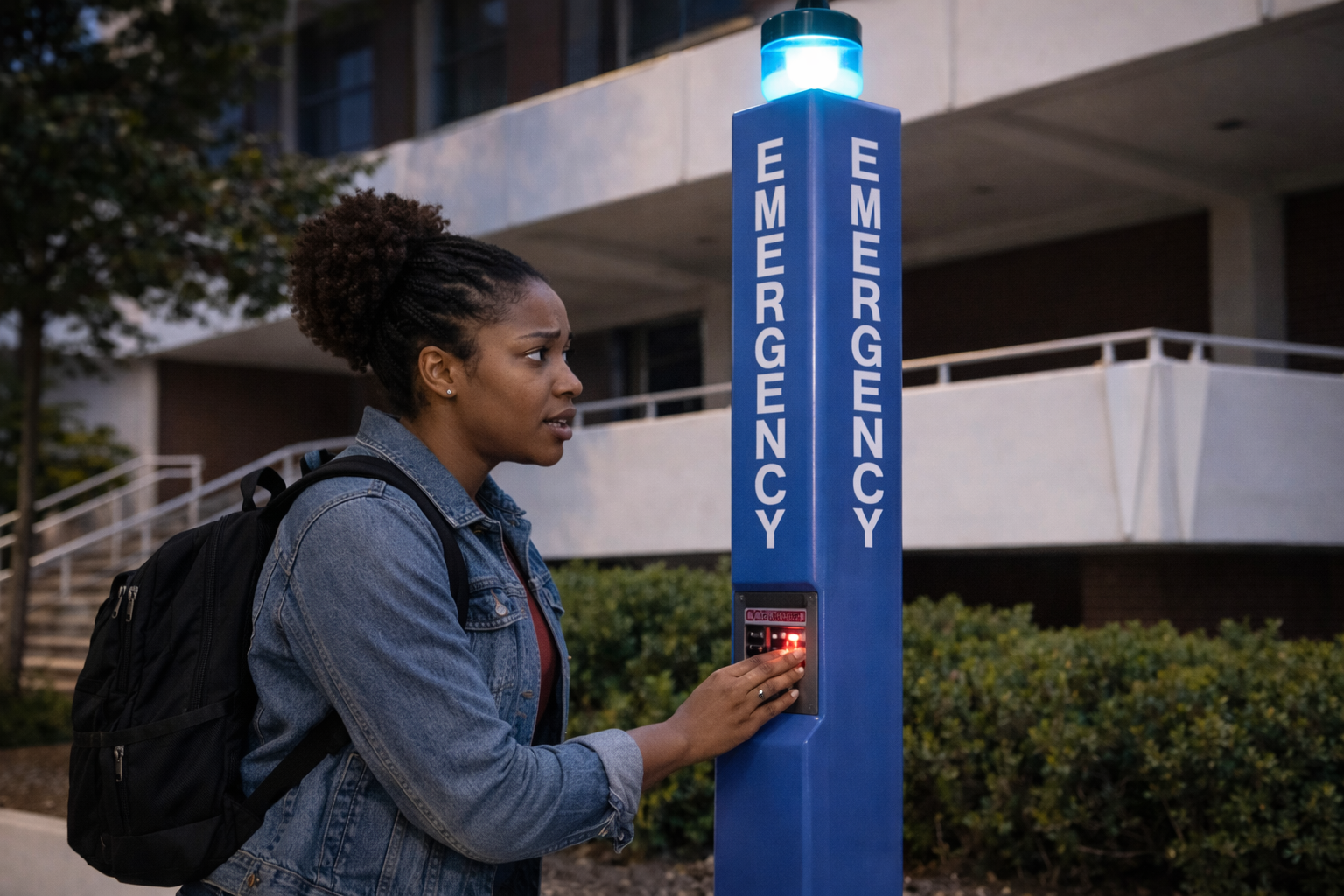AT&T’s copper line shutdown has begun

Copper lines are disappearing—and your emergency systems may be at risk.
AT&T has officially started phasing out its copper POTS (Plain Old Telephone Service) lines. This is the infrastructure that businesses and communities have relied on to power critical infrastructure for more than a century, but it’s finally coming to an end. For organizations, the question was never if copper will go away, but when. And the answer is finally here.
The new shutdown timeline
The first big milestone hits October 15, 2025. From that date on, AT&T will no longer support new installations, moves or changes to copper lines across nearly 20 states. This is the start of a nationwide phase-out, with the company planning to retire nearly all copper services by 2029.
AT&T previously announced plans to shut down copper-based services across the country by the end of 2029 at an investor event in December 2024.
“The bottom line is we expect to no longer provide copper-based services across the vast majority of our footprint by the end of 2029,” said Susan Johnson, AT&T’s head of wireline transformation and supply chain.
This commitment to retire the bulk of the company’s copper lines by 2029 was reinforced by AT&T CEO John Stankey during a Q4 earnings call. It also includes an initial target of 1,300 central offices. The company has already received regulatory approval to begin this massive transition, with the FCC recently approving AT&T to discontinue legacy services in about 10% of its footprint.
The hidden dependencies on copper phone lines
It’s tempting to shrug and say, “We don’t use landlines anymore.” But copper powers far more than phone calls. Many critical systems still depend on it, including:
- Fire alarm panels that alert emergency services to potential disasters.
- Elevator emergency phones for passenger safety and building code requirements.
- Public safety phones across parking lots, campuses, and other public spaces.
- Security alarm systems that secure facilities and keep tenants protected from intruders.
- Emergency call boxes and blue light safety phones.
- Fax machines that are still used by many property managers and in healthcare applications.
- Medical monitoring devices, for at-risk patients in hospitals.
If these connections disappear without a plan in place, organizations risk losing essential safety and compliance tools overnight which will come with some serious risks.
The risk of inaction
As AT&T phases out copper lines, organizations that haven’t prepared will face serious consequences, including:
- Safety code violations: Many local fire and building codes specifically require working emergency communication systems. A non-functional elevator phone or fire alarm connection could result in citations, fines, or even building closures.
- Insurance issues: Property insurance policies often mandate functional fire and security alarm systems. Loss of monitoring capability could void coverage or drastically increase premiums.
- Service disruptions: AT&T has already received approval to stop all new copper-based inward orders in 60 wire centers across 13 states, with many more approvals pending. Once AT&T stops supporting copper lines in your area, getting landline service restored becomes increasingly difficult—and eventually impossible.
The financial reality driving change
AT&T reportedly spends $6 billion annually to maintain its copper network, which spans the company’s 500,000-square mile local service footprint, yet only 5% of customers still use copper voice technology. The economic case for transitioning away from copper is compelling for AT&T, and that’s before you factor in the people cost, as copper networks require a significant amount of labor to maintain. To top that off, copper lines are highly valued and subject to ever-rising rates of copper theft, a growing problem since the early 2000s, with the FBI deeming it as a threat to critical US infrastructure. Thieves stealing copper wires are causing power and phone outages, exposing live wires, and even disrupting emergency services.
Companies such as AT&T and BT Group are trying to recover 800 million metric tons of copper lines over the next decade, worth over $7 billion.
Between 2021 and 2023, AT&T recycled more than 14,000 tons of copper and expects this part of its business to increase. The cables are being pulled out of the ground, stripped for the copper then sold at profits that top 30% after extraction, recovery and processing.
Clearly, carriers want out of the copper line business to increase their overall bottom lines.
The answer: Modern POTS replacement technology
The good news is that a proven alternative exists to keep critical devices operational as copper networks disappear. POTS replacement solutions, like Ooma AirDial®, are drop in devices that allow you to transform your existing analog lines into a dedicated wireless network.
Ooma AirDial delivers the path away from POTS line dependency. It is an award-winning, all-in-one solution designed to support all devices that traditionally relied on POTS lines. Ooma AirDIal provides:
- Broad compatibility with fire alarms, elevator phones, entry systems, and other POTS-dependent devices .
- Active/Active LTE and ethernet connectivity that routes traffic simultaneously to ensure that calls stay connected.
- Simple installation options, from DIY deployment to full white-glove turnkey service.
- Enterprise-grade reliability designed for critical applications across large scales deployments.
Don’t Wait Until It’s Too Late
With the October 15 deadline already here and the complete shutdown scheduled for 2029, the time to act is now. Here’s why immediate action is critical:
- Limited support window: AT&T is providing five years’ notice about eliminating its copper network to give the company, the FCC and consumers time to prepare, but as AT&T reduces copper infrastructure maintenance, service quality will decline even before final shutdown dates.
- Planning and implementation time: Identifying all POTS-dependent devices, evaluating solutions, and executing migrations takes time—especially for organizations with multiple locations.
- Supply chain considerations: As awareness of the copper shutdown grows, demand for replacement solutions will likely surge, potentially creating supply constraints and extended lead times.
- Testing and Validation: New systems need proper testing to ensure they meet code requirements and function correctly in emergency situations.
Take Action Today
With organizations from across nearly 20 states being affected, this is happening now. While it can be scary and overwhelming, there are steps you can take right now to help your business.
Protect your emergency devices and maintain compliance
Don’t put your critical communication systems at risk by waiting until copper service is discontinued in your area. Contact the POTS replacement experts today to learn how AirDial can keep your essential devices running reliably through the transition and beyond.
The era of copper is ending, but with the right preparation, your critical systems can continue protecting lives and property without interruption.
Ready to future-proof your critical communications? Reach out to learn more about AirDial and how it can seamlessly replace your copper POTS lines before the shutdown affects your operations.
Sources:
- Light Reading – “How (and when) AT&T will kiss copper goodbye” (December 2024)
- Telecompetitor – “AT&T Plans Copper Retirement By 2029: Here’s How” (December 2024)
- Fierce Network – “AT&T bumps fiber-passing goal to 50M and creates a landline phone replacement” (December 2024)
- USA TODAY – “AT&T to eliminate copper wire phone lines to most users” (December 2024)
- Mobile World Live – “AT&T CEO outlines copper retirement plan” (January 2025)
- Light Reading – “AT&T’s copper retirement plan plows ahead” (September 2025)

We’ll follow up within a business day.
We’ll help you analyze whether Ooma AirDial is a good solution for your needs.
A custom quote will be generated.






